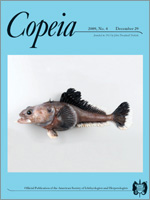The pathogenic chytrid fungus Batrachochytrium dendrobatidis, typically associated with anuran amphibians, is present in natural populations of the terrestrial salamander, Batrachoseps attenuatus, from California, USA, and four congeners from California and Oregon, USA. I demonstrate that the chytrid has been present in wild populations of B. attenuatus since at least 1973, and while infected salamanders collected in the wild exhibited 100% mortality in the laboratory, wild populations appear to have remained stable with seasonally variable infection rates. Laboratory experiments showed that inoculated salamanders housed in dry microhabitats, mimicking summer aestivation conditions, are able to shed the chytrid infection. Combining these data with the decrease in prevalence from spring to fall suggests that environmental conditions in the natural range of B. attenuatus mediate the effects of this potentially highly lethal pathogen, stabilizing this host–pathogen relationship. While B. attenuatus continues to be an abundant salamander, other amphibians are experiencing marked declines. An understanding of the relationship between the amphibian chytrid fungus and species of Batrachoseps may be applicable to patterns of declines and persistence in other species of plethodontid salamanders, and amphibians in general.
How to translate text using browser tools
29 December 2009
An Aquatic Disease on a Terrestrial Salamander: Individual and Population Level Effects of the Amphibian Chytrid Fungus, Batrachochytrium dendrobatidis, on Batrachoseps attenuatus (Plethodontidae)
Sara B. Weinstein
ACCESS THE FULL ARTICLE





